Dave Ramsey, a popular personal finance guru, put together a list of recommended budget percentages as a starting point for those wanting to get their finances under control.
In this post, I’m going to show you Dave’s percentages and then show you how my budget compares along with some information to help you better understand how these percentages relate to the budget challenges the average American family faces when trying to break the debt cycle.
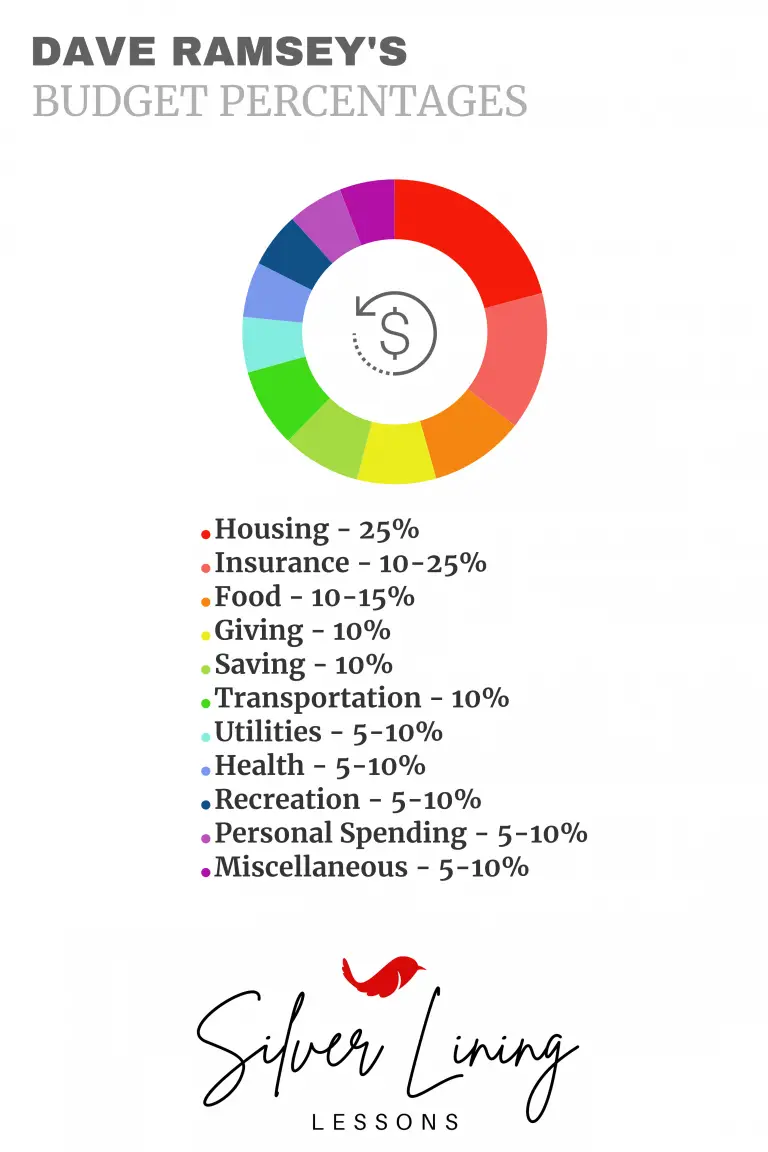
Giving (10%)
Dave recommends that you give 10% of your monthly income to charity or tithing.
Saving (10%)
10% of your income should be saved for retirement. This category can also be used for building your emergency fund or saving for a large purchase. Dave does not include a clearly defined debt payoff category, so I’ll assume that would be included here.
food (10-15%)
This only includes groceries and meals prepared at home. Dining out goes in either personal spending or recreation.
utilities (5-10%)
This would include the utilites for your home such as gas, water, electricity, cell phone, cable and internet.
Housing (25%)
Rent or mortgage payments along with any insurance, taxes, and HOA fees would fall into this category. This is usually the largest expense for most families.
Transportation (10%)
This category is for all of your transportation costs, including car payments, gas, insurance, public transportation expenses, oil changes, parking, and DMV fees.
Health (5-10%)
Anything you need for your health, not including insurance premiums, would go here. This could include things like medical bills, doctor visits with co-pays, over-the-counter medicines, and any prescriptions.
insurance (10-25%)
This includes health, dental, life and any other types of insurance. The only exceptions are automobile insurance (transportation) and homeowners insurance (housing).
recreation (5-10%)
All of the fun stuff and entertainment related expenses like dining out, gym memberships, movies, concerts, date nights, travel, and children’s activities fall into this category. You could also include streaming services here or include them with utilities.
personal spending (5-10%)
This one is for all of the personal purchases that aren’t exactly necessary. All of your online shopping, clothes, personal care, home décor, furniture or anything else you probably could have gone without. These are the extras!
Miscellaneous (5-10%)
Some expenses aren’t always covered in your budget or don’t fit nicely into any category, so we put those into miscellaneous. This can act more like a budget buffer.
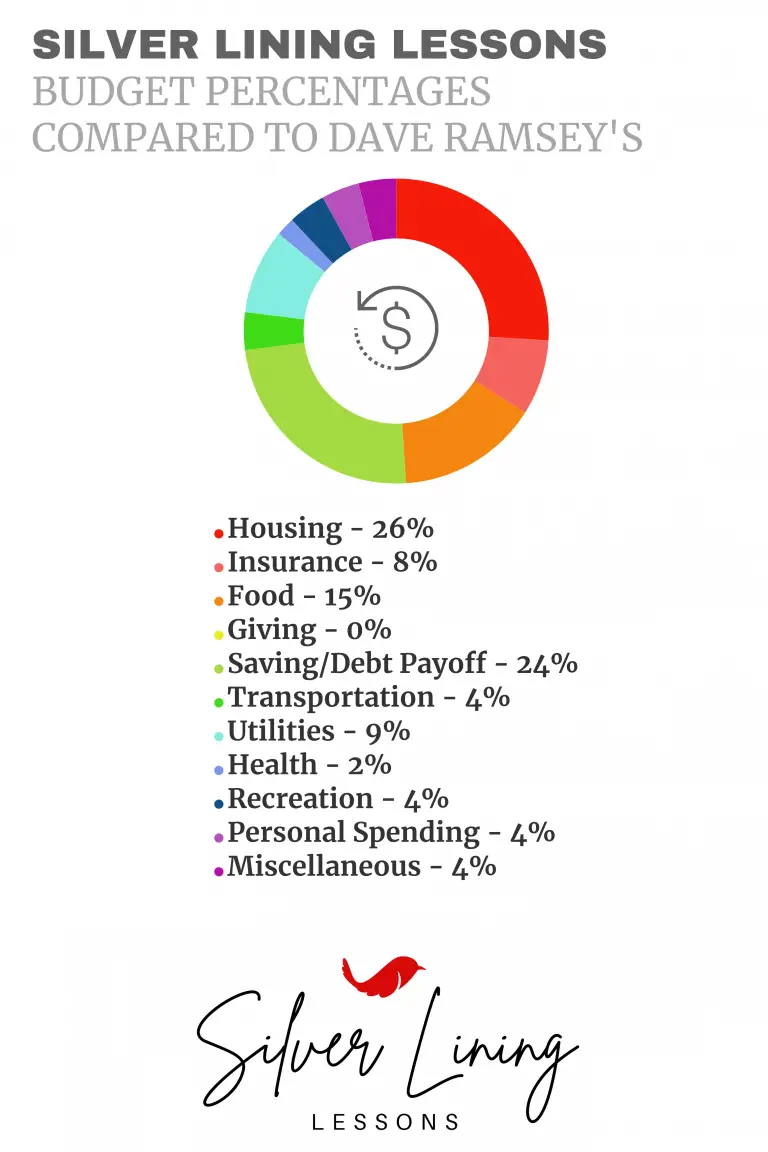
How My Budget Compares to Dave Ramsey's Percentages
Here is how my budget compares to Dave Ramsey’s recommended percentages along with some information to help you better understand how these percentages relate to the budget challenges the average American family faces:
giving (0%)
While pretty much everyone would love to donate or give more, 10% can be a lot when paying off debt or trying to save for retirement. This category is normally going to depend on your personal beliefs and preferences.
While I would like to give more in the future, we just don’t think it makes sense while trying to aggressively pay off debt.
savings/debt-payoff (24%)
Dave Ramsey doesn’t list out a specific category for debt payoff. He also recommends pausing 401k contributions while paying off debt, which we chose not to do because of the employer matching benefits. The bulk of this category is focused on our big goal of paying off six figures of debt in sixty months. Debt Payoff: How I Paid Off Over $32k in 12 Months (silverlininglessons.com)
Food (15%)
I don’t know about you, but the recommended 10-15% is a tough number to hit, even with tight budgeting. The average American family of four spends between $682.80 and $1,361.50 per month on groceries.
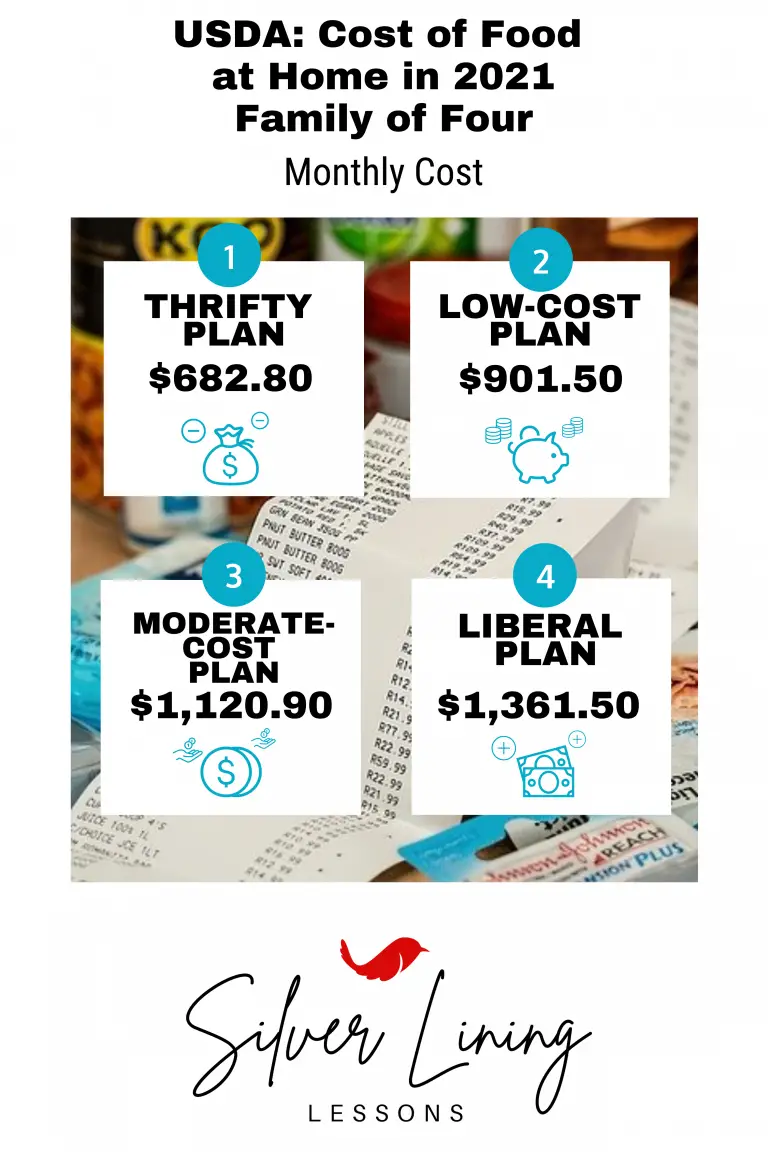
I’ve talked to y’all about my grocery budget struggle. Even with cooking all of our meals at home, we just barely squeeze within Dave’s recommendations. My family of four currently falls into the USDA’s “moderate-cost” category, and we’d eventually like to be in the “low-cost” bracket.
Utilities (9%)
While 10% seems like it should be enough, the rising cost of these services make this another tough category to hit. The average American family of four spends roughly $267 per month on utilities and $113 per month for a cellphone plan.
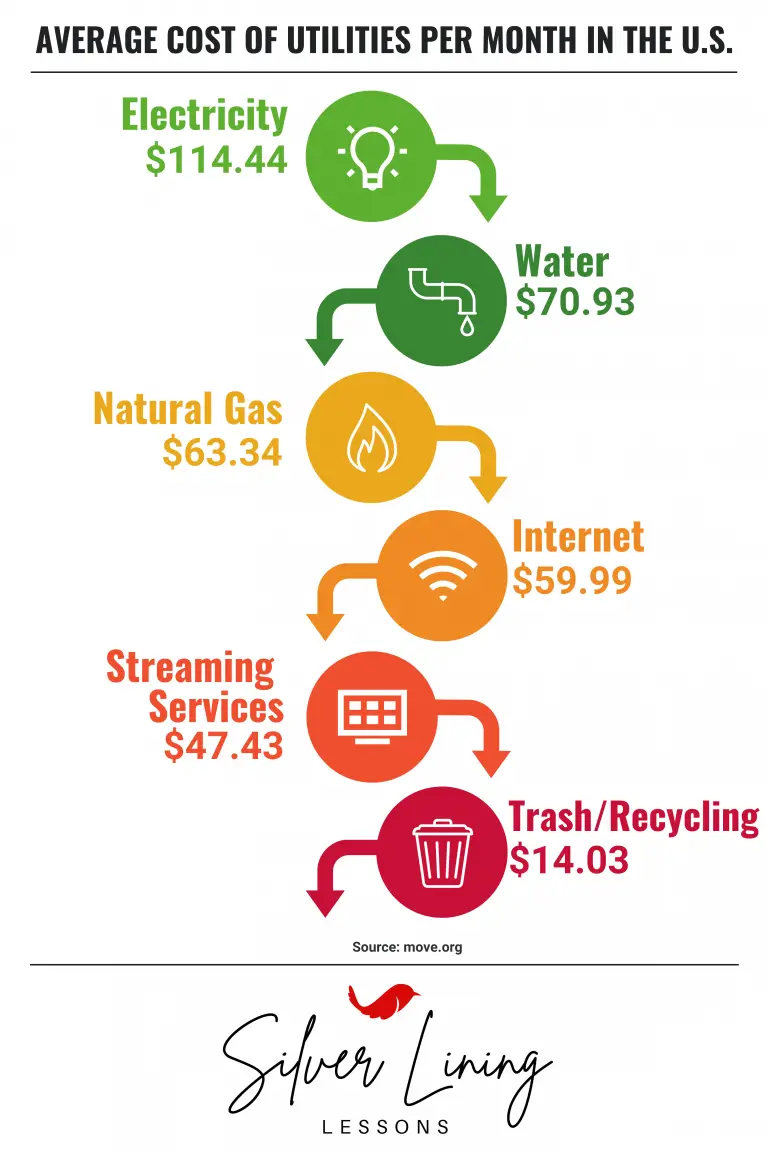
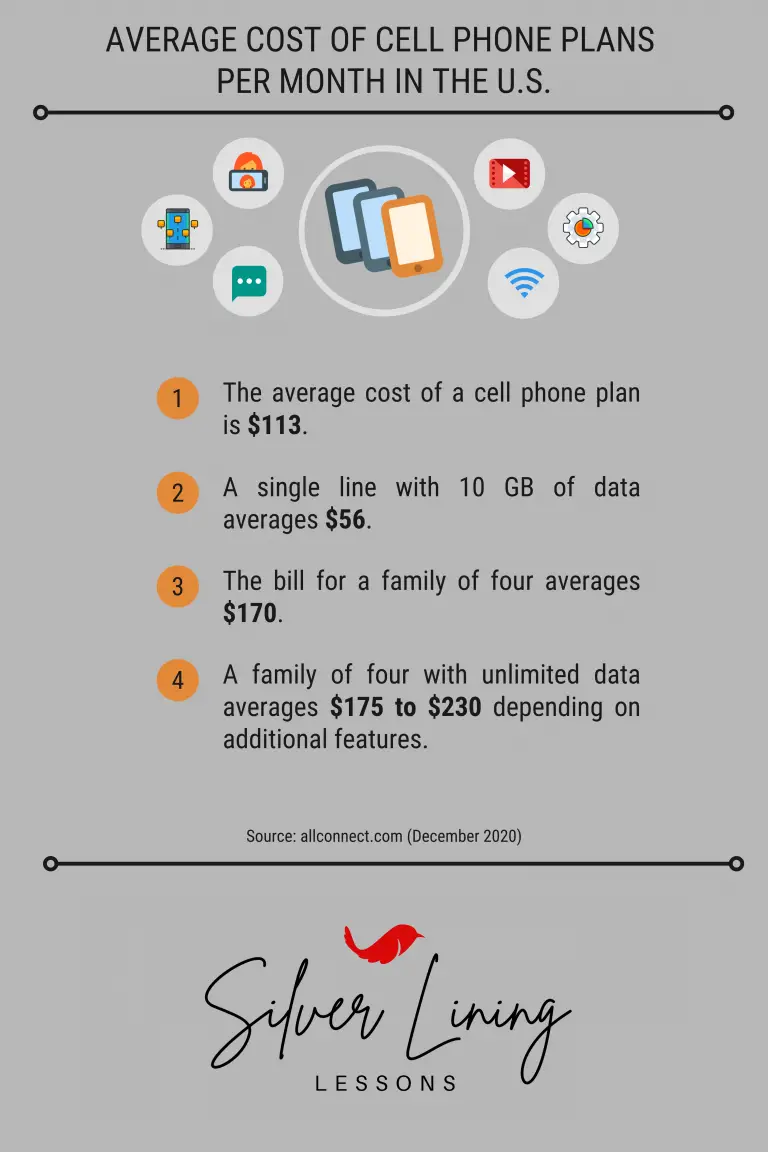
While my family falls within the recommended guidelines, it took cutting cable, limiting streaming services, and reducing our cell phone bill, to barely get us there.
How I Saved $1,800/year Cutting Cable (silverlininglessons.com)
The Budget Meeting – $1,000 Monthly Savings (silverlininglessons.com)
Housing (26%)
The 25% recommendation may not be realistic depending on your geographic location and cost of living. I was honestly surprised we were this close to Dave’s number. Once you add in taxes and HOA fees, it just feels like such a BIG amount each month.
Health (2%)
Depending on your health situation and insurance coverage, this percentage could vary drastically. Our family is under budget here. We are lucky to have good health and don’t require too many medications..
insurance (8%)
These are simply our health, dental and life insurance premiums, which come in below the recommended 10-25%. Again, we are lucky in this area to have great coverage and rates provided through employment.
recreation (4%)
We are now on the low end after finding inexpensive ways to have fun at home. Eliminating dining out has made a huge impact, and we are able to stay within our budget in this category most months.
personal spending (4%)
We are on the low end here, too. If we ever completely blow a category, it’s always this one. It’s just too easy to hit “Add to Cart” for me some days. Work in progress!
transportation (4%)
If you have one or more automobile loans, 10% is definitely going to be a stretch. We currently have both of our vehicles paid off, so this category is extremely low. My husband and I are also relatively close to work and use very little gas each month. Just plugging in our prior car payments, I can easily see how transportation could eat up 15-20% of your budget.
Miscellaneous (4%)
This one is so small because we’ve focused heavily on getting our budget as streamlined as possible. The excess fat, I guess you could say, has been cut already, leaving very little room for extras.
The hardest part of budgeting is actually creating one.
Dave Ramsey’s recommended percentages are a great place to start if you’re feeling overwhelmed. You will likely have to cut back in many areas and make some necessary changes depending on your numbers, but it’s totally attainable.
Will this budget work for everyone? No. My budget doesn’t look like Dave’s, and yours won’t look like mine. It may not be realistic for yours to stay within the recommended percentages, but they are just guidelines. Whether you are creating from scratch or adjusting your current budget, these suggestions can help you get on track.
Once you have a plan, you are well on your way to having your finances under control. Like any other skill, budgeting is something you can get better at with practice and hard work. You are much more likely to reach your goals if you just take the first step toward tackling your budget.
Check out my post for more on How to Stick to a Budget.
Which of these budget categories do you struggle with the most?
Which one do you find easiest to stay way under budget??
Remember to SUBSCRIBE and FOLLOW US to stay up to date on all things Silver Lining Lessons.
**The links in this post are affiliate links. This means if you click on the link and purchase an item, I will receive an affiliate commission at no extra cost to you. All opinions remain my own.

